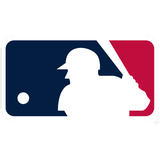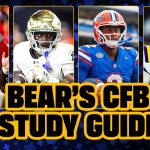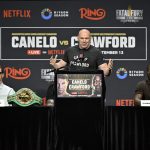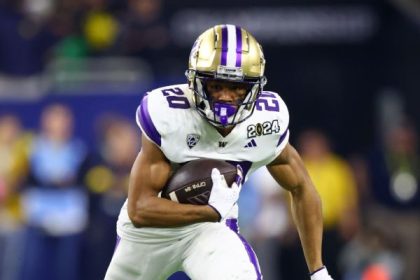It hasn’t even been four months since the Baltimore Orioles optioned Grayson Rodriguez to the Triple-A Norfolk Tides.
Over the winter, the 24-year-old Rodriguez had been hailed as one of the sport’s best pitching prospects, a sturdy, hard-throwing hoss with a deep arsenal and frontline potential. Instead, he performed like a batting-cage pitching machine, posting a catastrophic 7.35 ERA in his first 10 starts with the single highest hard-hit rate in MLB. That’s when the Orioles, already very much in the AL East mix, ran out of patience and sent their young hurler to the minors to get right.
Rodriguez returned to Norfolk in late May, understandably frustrated. Nobody in Triple-A ultimately wants to be there, whether it’s the minor-league lifers grinding for a taste, the has-beens trying to be again or the top prospects stopping by on the way to brighter stages. When the Birds initially promoted Rodriguez on April 5th, the former first-round pick likely figured to never step foot in Norfolk ever again.
But there he was, a Tide and no longer an Oriole, forced to reckon with his shortcomings and make the necessary adjustments. And he did.
ADVERTISEMENT
Across seven Triple-A starts, the 6-foot-5 Texan regained his confidence and rediscovered his sparkle. Thanks to a few minor mechanical adjustments, Rodriguez saw his fastball velocity and command improve dramatically. He ditched his oft-blasted cutter in favor of more heaters, changeups and curves. Better results followed suit, and Rodriguez was recalled to Baltimore right after the All-Star break.
Since then, he’s been one of the most effective pitchers in baseball. His 2.59 ERA and 53.4% ground ball rate in 11 second-half starts are both third lowest in the American League. His hard-hit rate has gone from dead last to comfortably above average. And his home runs allowed per nine innings, a true first-half bugaboo for Rodriguez, has improved from third worst in baseball to third best.
Rodriguez’s masterful outing against Tampa Bay on Saturday was the crowning moment of his bounce-back second half.
The Rays were threatening to grab the upper hand in the AL East (and pennant race) after taking the first two games of a four-game set in Baltimore, which tied the division foes for the first time in months. They also had their ace, Tyler Glasnow, on the bump. But the O’s lineup pummeled Glasnow, while Rodriguez allowed zero runs and struck out seven across eight innings to catapult his club back into the AL (East) driver’s seat. It was confirmation of Rodriguez’s rejuvenation, not to mention more evidence that the soft-spoken Southerner might well become the frontline presence Baltimore drafted him to be.
After their inspiring series split against the Rays, which saw both teams clinch a playoff spot, the Orioles sit 2.5 games up on the Rays with 12 to play. Saturday’s 8-0 win also gave Baltimore the head-to-head tiebreaker over Tampa, effectively adding an extra game to that margin.
Ask most folks around baseball how they feel about Baltimore’s playoff chances, and you’ll get a lot of skeptical looks accompanied by some variation of, I don’t trust that pitching staff. Which, fair. The Orioles’ 4.35 starter ERA, a mark bolstered by the new pitcher-friendly dimensions at Camden Yards, is a mediocre 16th in the majors. The only pitchers on the Orioles roster with a career postseason start are Kyle Gibson and Jack Flaherty, both of whom could be relegated to the bullpen this October.
But the front four of Kyle Bradish, Rodriguez, Dean Kremer and fresh-off-the-IL John Means is encouraging, if not fear-inducing. And it’s Rodriguez who offers the most potential for a truly dominant showing.
“I feel like a completely different pitcher,” Rodriguez told reporters soon after returning to the bigs in late July.
His stats support that sentiment.
Following his Triple-A stint, Rodriguez has the third-hardest average fastball velocity (97.9 mph) among starters behind only reigning NL Cy Young Sandy Alcántara and fellow rookie phenom Bobby Miller. That uptick in velo compared to his pre-Norfolk outings (96.6) has been complemented by sharper command, both of which have given G-Rod much more leeway with his heater.
Before the break, Rodriguez leaned on a subpar cutter to compensate for his poor fastball command. Both of those pitches got absolutely smashed by opposing hitters and contributed to his demotion. Over the past two months, Rodriguez has more or less ditched the cutter altogether, opting to lean on his revived fastball to get ahead in the count.
Few hurlers have posted a better first-pitch strike percentage in the second half. Getting ahead with the fastball on both sides of the plate has enabled Rodriguez to pick from a deep arsenal of secondaries to induce weak contact or whiffs. It’s a simple but effective approach, and one that should continue working when the weather gets cold and the games get more important.
Rodriguez appears on track to get the ball at home in Game 2 of an ALDS, with a chance to either go up two games to zero or level the series. That environment will feel a universe away from what he experienced in Norfolk in early June. But the talented youngster needed one to reach the other.
Jake Mintz, the louder half of @CespedesBBQ is a baseball writer for FOX Sports. He played college baseball, poorly at first, then very well, very briefly. Jake lives in New York City where he coaches Little League and rides his bike, sometimes at the same time. Follow him on Twitter at @Jake_Mintz.
MLB trending

Get more from Major League Baseball Follow your favorites to get information about games, news and more











